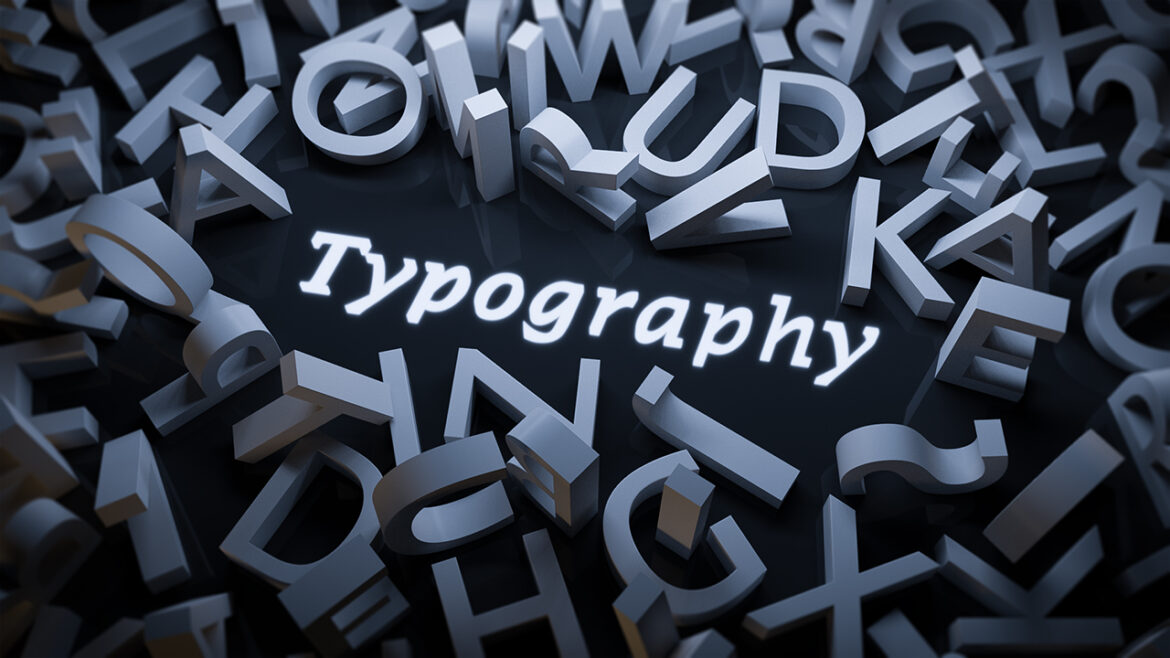Table of Contents
Typography has long been a pillar of effective digital communication, but a persistent issue has plagued it for years: fonts that look fantastic on one device might appear bloated or unreadable on another. In the digital age, where content is viewed across a vast array of devices — from smartphones and tablets to desktop computers — ensuring that fonts look consistent and legible has always been a challenge. As much as we strive to make our websites and applications user-friendly, typography’s inconsistent presentation across different platforms has often been a major stumbling block.
For example, a beautifully designed website might appear flawless on your high-end MacBook, but on a low-cost Chromebook, the fonts may look pixelated or stretched out. Similarly, a sleek, modern font that appears perfect on an iPhone might become disjointed and blocky when viewed on an older device like a Nexus 6. It’s these inconsistencies that often frustrate users and can lead to poor user experiences — and, worse still, lost engagement.
This typography problem extends beyond just personal devices. When people share articles, blogs, or even casual content, the beauty of the typeface may be diminished when it reaches someone else’s screen. A funny listicle or thought-provoking article could become an unreadable mess simply because the fonts fail to render properly across devices. All of this leaves us wondering: Is it possible to have a universal solution to ensure that typography always looks great, regardless of the platform? Thankfully, the answer is yes.
Enter variable fonts, a breakthrough in typography that promises to solve this long-standing issue. This new technology allows fonts to adapt fluidly and dynamically, in real-time, to look perfect on any screen size, device, or platform. They promise not just improved design flexibility but also major improvements in performance, reducing page load times and overall data consumption. For both designers and developers, this is a game-changer, and the potential benefits are far-reaching.
What Are Variable Fonts?
Variable fonts are a type of font technology that allows for multiple variations — such as weight, width, and slant — within a single font file. Unlike traditional fonts that require separate files for each style (such as regular, bold, italic, etc.), variable fonts combine all of these styles into one, enabling the font to adjust dynamically based on the user’s device, screen size, or even environmental factors such as the brightness of the screen.
The result? A far more efficient and adaptable typography system. For example, a website that uses variable fonts can seamlessly adjust the text’s weight for better readability on smaller screens without sacrificing visual appeal or functionality. The font adjusts based on the needs of the device and user, ensuring a flawless viewing experience every time.
This flexibility is incredibly beneficial not only for ensuring a better visual experience but also for making sure the website performs better. Fonts often contribute to the overall data usage of a website, and the less data you need to load, the faster your website will load. By reducing the number of font files needed and compressing all variations into one, variable fonts help reduce page weight, leading to faster loading times and, by extension, better user retention.
How Do Variable Fonts Work?
The technology behind variable fonts is rooted in the OpenType Font Variations standard, an open-source initiative that allows a single font file to contain multiple variations of the same typeface. These variations can range from weight (e.g., light to bold) to width (e.g., condensed to expanded) and even slant (e.g., italic to oblique).
What makes variable fonts so powerful is their ability to adjust in real-time. For example, if you’re reading a webpage on a small mobile screen, the text might automatically adjust to a lighter weight and a slightly more condensed style to ensure it’s legible without overwhelming the screen. Conversely, on a large desktop monitor, the font might expand and become bolder for improved readability. All of this happens seamlessly and without the need for designers to specify multiple font files.
The true beauty of variable fonts lies in their scalability and versatility. Traditional fonts are limited in the number of styles they offer — often only a handful of weights and variants. But with variable fonts, designers and developers have almost limitless control over how a typeface looks and behaves. They can adjust the font’s weight, width, and slant in minute increments, giving them much more precise control over the typography, and ultimately the user experience.
Why Are Variable Fonts Important for Non-Developers?
You may be wondering: why should you care about variable fonts if you’re not a developer or designer? The truth is, variable fonts are a significant development for anyone who interacts with digital content. The impact of well-executed typography goes beyond the designer’s workspace — it extends to the user experience.
From the moment a user visits a website, typography plays a central role in how they perceive the content. If the type is too small, too large, or simply misaligned, it can leave a negative impression, even if the content itself is high-quality. On the other hand, if the typography is crisp, legible, and aesthetically pleasing, it can make the entire digital experience feel more professional and polished.
Variable fonts solve this problem by ensuring that text remains clear, legible, and visually pleasing, regardless of the user’s device. Whether you’re browsing a blog on your smartphone or reading an email on a tablet, variable fonts ensure that the text adapts dynamically, providing an optimal reading experience.
Beyond aesthetics, variable fonts also help improve page load times, which has a direct impact on how users interact with a website. In today’s fast-paced digital world, users expect websites to load quickly — and they won’t wait around for a slow page to load. With variable fonts, the reduction in file size helps pages load faster, making users more likely to stick around and engage with the content.
The Growing Adoption of Variable Fonts
Variable fonts have been around for a few years, but their adoption has exploded in recent times, thanks to the widespread support from major technology companies like Apple, Microsoft, and Google. These tech giants have integrated variable fonts into their platforms, ensuring that the technology works seamlessly across a variety of devices and operating systems. Apple was one of the first companies to support variable fonts, with macOS and iOS offering full support for this technology. Google also jumped on board, with Chrome supporting variable fonts as of 2018.
The widespread adoption of variable fonts by major players in the tech industry has significantly accelerated their use in web design and application development. The benefits of variable fonts — including their adaptability, improved performance, and reduced data consumption — make them an obvious choice for developers and designers who are looking to create user-friendly, high-performance websites and applications.
The Impact on Web Design and Performance
Web designers have long struggled with balancing aesthetics and performance. Beautiful typography often requires loading multiple font files, which increases the page’s load time and can negatively affect user experience. Variable fonts eliminate this issue by providing a single file that contains all the necessary font styles, reducing the overall file size and minimizing the number of requests to external servers. This not only speeds up page loading but also conserves bandwidth, making it an eco-friendly option.
Additionally, variable fonts enable designers to create more dynamic and flexible layouts. Fonts can now adjust to fit the context of the page, the user’s device, and even the environmental conditions (such as screen brightness). This level of customization allows designers to optimize the readability and visual appeal of text on any device, whether it’s a mobile phone, tablet, or desktop computer.
By using variable fonts, designers no longer need to worry about compatibility issues or sacrifice design quality for performance. They can create beautiful, responsive typography that looks great on any device, without worrying about bloating their website with multiple font files.
Looking Ahead: The Future of Variable Fonts
As web technologies continue to evolve, variable fonts will become even more integral to the design process. The potential for customization and scalability that they offer is unmatched by traditional fonts, and as more developers and designers adopt this technology, we can expect to see even more sophisticated and engaging digital experiences.
With the continued support of major tech companies and the growing community of web designers and developers embracing variable fonts, we can expect this innovation to become a standard feature in the way we design and experience the web. Websites and applications that use variable fonts will be faster, more responsive, and more engaging, ensuring that typography no longer becomes an obstacle to the user experience.
Variable fonts are an exciting development in the world of digital typography, and they’re poised to transform the way we design and interact with content online. With their adaptability, scalability, and efficiency, variable fonts provide a solution to the long-standing problem of inconsistent typography across devices and platforms. For web designers, developers, and users alike, variable fonts offer an opportunity to create faster, more responsive, and visually stunning digital experiences.
By embracing variable fonts, we are not just making websites and apps look better — we’re improving performance, reducing carbon footprints, and enhancing the user experience. The future of typography is here, and it’s more flexible, dynamic, and efficient than ever before.
As variable fonts become the new norm, we can expect a more consistent and enjoyable web experience for everyone, no matter the device or platform. And for anyone who’s ever been frustrated by poor typography, that’s a change worth celebrating.



